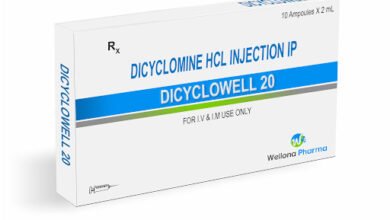Understanding Symphysis Pubis Dysfunction (SPD) During Pregnancy

There are several painful aches and symptoms associated with pregnancy. Your symphysis pubis joint, which is situated in front of the pubic bone, is one of the most often experienced ailments.
During pregnancy, this region may hurt because of ligament relaxation, hormone changes, and alignment changes. Pelvic discomfort, commonly called pelvic girdle pain (PGP), can occasionally indicate a disorder called symphysis pubis dysfunction (SPD).
In reality, up to 60% of pregnant women report having discomfort in their pubic symphysis. SDP is unpleasant but not harmful to you or your unborn child. Thankfully, SPD discomfort goes away after birth.
Here is everything you need to know about SPD in pregnancy, including causes, signs, and possible treatments for SPD during pregnancy; continue reading to know more.
What is Symphysis pubis dysfunction(SPD)?
Symphysis pubis dysfunction (SPD), also known as pubis symphysis dysfunction, is a pelvic pain during pregnancy. It is sometimes referred to as PG (pelvic girdle pain).
The pubic symphysis is a joint located in the middle of the pubic bones, just above the vulva. The ligaments around this joint grow more elastic and supple when you are pregnant so that your baby may pass through during birth. However, if the ligaments loosen up too much before that, it may result in discomfort and instability.
From mild pain to severe pain that limits mobility, SPD can vary. Both the front and the rear of the pelvis are susceptible.
How does SPD affect pregnancy?
Depending on the severity, up to one in five pregnant women are thought to experience SPD. Many pregnant women begin to experience pain in the middle of their pregnancy, although SPD can happen at any point during or after giving birth.
Pain in the frontal region of the pelvis, where the SP is situated, is one of the symptoms of SPD. Pain in the legs, hips, groin, and lower back are further symptoms of SPD. During physical exercise, especially a change in posture, a distinctive “clicking” sound is frequently noted in the hips or lower back (the sacroiliac).
The illness can vary greatly, with some cases being chronic and permanently disabled. Although the vast majority of instances will resolve on their own after your baby is born, treating issues as soon as possible is crucial to reduce SPD’s severity and duration.
What are the causes of SPD in pregnancy?
Pregnancy is the most prevalent of SPD’s various possible causes.
The center of gravity of the body shifts during pregnancy, which might have an impact on posture and cause pain. In order to loosen the ligaments and allow the pelvis to expand and facilitate birthing, the body also secretes the hormone relaxin. This effect can also cause SPD.
Doctors are unsure of why some pregnant women get SPD while others do not. However, some elements, such as the following, may raise the risk:
- Being obese or overweight before conception.
- Pelvic damage is present.
- A background of lower back discomfort.
- A prior pregnancy, she was having pelvic discomfort.
SPD has been experienced by 31.7% of pregnant women, according to a study published in The Journal of the Canadian Chiropractic Association.
SPD can happen due to arthritis or pelvic traumas, but it is far more frequent during pregnancy and after childbirth.
What are the symptoms of SPD in pregnancy?
The intensity and appearance of SPD symptoms might vary from person to person. The following signs are most frequently felt:
- Discomfort at the front middle of your pubic bone.
- one or both sides of your lower back may be in discomfort.
- Discomfort in the perineum, which is located between the anus and vagina.
Sometimes, the discomfort spreads to the thighs, and your pelvis may also make a grinding or clicking noise that you might either hear or feel.
The discomfort is frequently more noticeable when you’re:
- Walking.
- Ascending stairs.
- The act of standing on one leg.
- Swaying back and forth in bed.
Additionally, spreading your legs out could be difficult. This might complicate routine chores like getting out of bed, dressing, etc.
What are the complications of SPD in pregnancy?
Most women with SPD can still give birth vaginally, and the condition is not medically dangerous to your baby. However, persistent discomfort can cause melancholy or even depression, sometimes considered harmful to the developing baby.
Although SPD symptoms typically don’t go away completely until after giving birth, there are several things you may take to lessen your suffering. It’s crucial to get assistance for this reason.
If you’re dealing with SPD, the Pelvic, Obstetric, and Gynaecological Physiotherapy group from the U.K. advises that you try to stay clear of the following activities:
- Placing all of your weight on a single leg.
- Lifting while bending and twisting.
- Carrying your child.
- Bending your knees.
- Difficulty sitting on the floor.
- Twisting your body.
- Sitting or standing more.
- Lifting hefty objects like toddlers, shopping bags, or damp clothes.
- Vacuuming.
- Pushing heavy objects.
How can you treat SPD in pregnancy?
- Heat or cold compression: At the pubic bone, use an ice pack. Use a heated pad instead. (Apply it for 10-15 minutes to the pubic region, not your abdomen.)
- Kegels and pelvic tilt exercises help to build up the local muscles.
- To identify an ideal sleeping position, use pregnancy pillows. The hips and lower back may be relaxed if you tuck a cushion between your knees.
Physiotherapy
Your pelvic floor, back, stomach, and hips can all benefit from strengthening exercises, which a physiotherapist might suggest. She can also recommend comfortable postures for performing routine tasks, having sex, and giving birth.
Acupuncture
According to some research, acupuncture may assist with pelvic girdle discomfort during pregnancy. Make sure the acupuncturist you choose has expertise in treating pregnant women.
Soft tissue therapy.
Chiropractic treatment, which may include spinal manipulation and massages to enhance pelvic joint stability and alignment, is a common kind of soft tissue therapy.
Wearing a belt to support.
A pregnancy belt provides support and aids in maintaining proper alignment of the pelvic bones. The belt could offer momentary pain alleviation.
A pregnancy support belt effectively decreased pain in a trial involving 46 pregnant women experiencing pelvic girdle discomfort, but only when they wore it often for brief periods.
Medication
Many people are concerned about using painkillers while pregnant. However, certain medications, like paracetamol, are safe for you and your unborn child as long as you take the prescribed dosage.
Stretching.
Stretches useful for one person may not be for another, as SPD affects everyone differently.
It would help to speak with your physician about which stretches are safe when pregnant.
Conclusion
Pain in the front or rear of the pelvic joints is a symptom of symphysis pubis dysfunction. Walking may become challenging, and you may experience severe discomfort.
Although SPD doesn’t directly impact your unborn child, it can make pregnancy more challenging owing to decreased mobility. Additionally, some women could find it challenging to give birth vaginally.
Treatment aids in reducing discomfort and increasing mobility.
SPD symptoms often go away after giving delivery. If your symptoms are serious, consult your doctor.
Source link
#Understanding #Symphysis #Pubis #Dysfunction #SPD #Pregnancy



